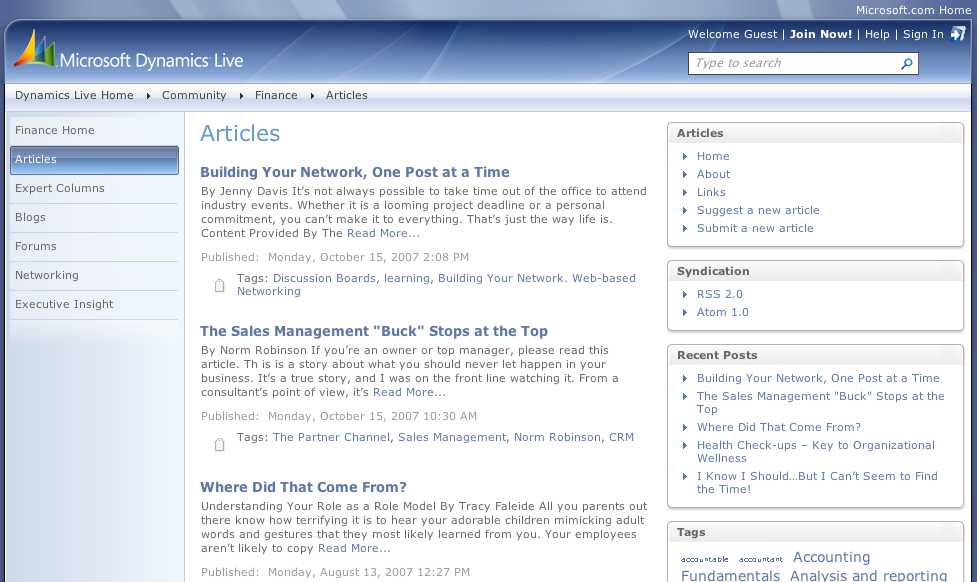Microsoft embedding social media in Dynamics

Earlier today I spent time with Craig Dewar and Julio de Villasante, both of whom are working on social media style applications at Microsoft for the business applications divisions. Microsoft is no stranger to communities having operated MSDN and Channel 9 for some years. However, building communities for business users is very different to technical communities. Business communities require a lot more hand holding and tend to be less familiar with social computing technologies like blogs and forums.
Julio told me the company is exploring ways of developing content for the Dynamics user base and is currently focused on three initiatives:
- Surfacing Microsoft content that's already available
- Developing relationships with third party content providers. One of the early signings is CFO.com for the finance community but the company is also looking to get partners on board, selling the concept as a lead generation and prospecting opportunity
- Developing end user content
Microsoft has started with finance as that is an easy group to pick off. It plans to add communities around sales, marketing and other functions. "As we start to see the younger generation of users come into the marketplace, we believe they will expect to see MySpace style communities in the working environment," said de Villasante.
A genuine challenge is in getting users familiar with contributing to these services rather than having them behave as information consumers. Craig Dewar explains the scale of the problem: "How can we reach the 2.5 to 3 million Dynamics users when they're spread among thousands of partners and across multiple geographies? As I see it, the best way is through the product."
Currently in early beta, Dewar says Microsoft would like to introduce the community concept to market through the mainstream products. It hopes for example to embed role based community sites when AX5 and NAV6 ship during 2008. These will include forums, blogs, syndicated content and expert articles. The idea is that role specific content is delivered as part of the Dynamics user desktop. Microsoft believes it knows enough about its users to do this through tagging but acknowledges there will be a learning curve and that content delivery will need refining over time.
This project is not without risk. Microsoft needs to ensure it builds community trust. Users I speak with are remarkably content with the level of functionality that Microsoft is shipping in its business applications. While this engenders a degree of goodwill, it is no guarantee that the communities will work. One of the ways it plans to innovate is through users nominating subject areas on which they'd like fresh information. Microsoft will then recruit subject matter experts to develop content. One example quoted was balanced scorecard. "We think that asking the community and then delivering what they want is a good way to go forward," said Dewar.
Such a move might imply that Microsoft is more inclined to consider software as services. de Villasante would not go that far, preferring to continue the software and services theme. He did however acknowledge that the transition, if that is indeed what's happening, is proving: 'a hard evolution.'
